By Pat McTaggart
Adolf Hitler was obsessed with Leningrad. When planning his invasion of the Soviet Union, the Führer demanded that the capture of the city, which he regarded as the cradle of Bolshevism, be one of the top priorities of the campaign, giving it precedence over the capture of Moscow.
Therefore, when the OKW (Oberkommando der Wehrmacht—the German Armed Forces High Command) issued Directive No. 21, also known as Operation Barbarossa, it included instructions for Army Group North to attack out of East Prussia, destroy Soviet forces in the Baltic area, and then drive forward to capture Leningrad.
The Plan to Secure the Daugava River
To accomplish that mission, Field Marshal Wilhelm Ritter von Leeb, the army group commander, had two infantry armies, the 16th and 18th, and Panzer Group 4, which would be his mailed fist. The approximately 700 kilometer thrust to the city would take von Leeb’s army group through country that was dotted with marshes and forests and was crisscrossed with streams and rivers.
One of the first objectives for von Leeb was the Daugava River (also known as the Dvina), which rises in the Valdai Hills in Belarus and flows 1,020 kilometers to the Gulf of Riga. Securing crossings on the river was vital for von Leeb, especially because they also sat on some of the few good roads in the area.
General Erich Hoepner’s Panzer Group 4 was given the task of taking the bridges spanning the river intact. This would involve a mad dash across Lithuania to the Latvian cities of Daugavpils (Dvinsk to the Russians and Dünaburg to the Germans) and Jekabpils. The Baltic States of Latvia, Lithuania, and Estonia had been “liberated” and annexed by the Soviet Union in 1940.
Hoepner’s forces consisted of two motorized corps—the XLI, commanded by General George-Hans Reinhardt, and the LVI, under General Erich von Manstein. Reinhardt was to take the Jekabpils crossing, while von Manstein was to take the Daugavpils bridges. On Panzer Group 4’s right flank, General Ernst Busch’s 16th Army would move on Kaunus. General Georg von Küchler’s 18th Army, positioned on the left flank, would push toward Riga.
An Innocuous Warning
Facing von Leeb were the forces of Lt. Gen. Fedor Isadorovich Kuznetsov’s Baltic Special Military District, which would become the Northwest Front the day the war started.
Maj. Gen. Petr Petrovich Sobennikov’s 8th Army, five infantry, two tank and one mechanized division plus two frontier regiments, was anchored on the Baltic coastline. On his left was Lt. Gen. Vasili Ivanovich Morozov’s 11th Army, eight rifle, two tank, and one mechanized division plus three frontier regiments. They were backed up by Maj. Gen. Nikolai Erastovich Berzanin’s 27th Army of six rifle divisions.
The Soviet High Command (Stavka) knew that a German attack was imminent from German defectors crossing the line. Stalin, however, remained unconvinced, but he did allow his front line commanders to be issued a warning of a possible surprise attack. The warning was worded in a way that caused most commanders more consternation rather than giving them direction. For example, “The assignment of our forces—not to give way to provocations of any kind which might lead to major complications.” They were also told them to man forward positions but “no other measures are to be taken without special authorization.”
Upon receiving the rather innocuous warning early on June 22, 1941, Kuznetsov ordered his men to “secretly man the defenses of the basic zones.” In the forward areas, sentries were moved to guard pillboxes, but units assigned to occupy the forward zones were to be held back.
He added, “In the case of provocative action by the Germans, fire is not to be opened. In the event of flights by German aircraft over our territory, make no demonstration, and until such time as enemy aircraft undertake military operations, no fire is to be opened on them.”
The order, no doubt, must have caused many commanders to wonder what the difference was between provocation and military operations. At any rate, only a few of the frontline commanders had received the order by 0300 hours, and by that time it was too late.
Blitzkrieg on the Eastern Front
Across the border, the western sky suddenly lit up. The brilliant flashes were swiftly followed by the howl of shells overhead. Seconds later, massive explosions rocked pretargeted positions along the Russian lines. Operation Barbarossa and the race to Leningrad had begun.
Both von Manstein and Reinhardt knew speed was essential in reaching the Daugava. Because of the poor road system, both generals would have to rely on armored spearheads smashing through the Soviet line while disregarding their flanks, but before the mechanized units could move the infantry would have to take the forward enemy positions along the Neman River, which ran along the border between East Prussia and Lithuania.
There was little resistance as assault troops rolled over the surprised Soviets. Crossings on the Neman were secured, giving von Manstein and Reinhardt the openings they needed to begin their dash to the Daugava.

By 6 am, von Manstein reported that Brig. Gen. Erich Brandenberger’s 8th Panzer Division had taken Jurbarkas and Maj. Gen. Theodore Freiherr von Wrede’s 290th Infantry Division was advancing through the village of Mitua, 12 kilometers northwest of Brandenberger’s unit. In Reinhardt’s sector, the 6th Panzer Division, commanded by Brig. Gen. Franz Landgraf, was already four kilometers south of Taurage, and Maj. Gen. Friedrich Kirchner’s 1st Panzer Division was directly west of the city.
“We Advise You Not Engage in Combat Operations”
The initial German bombardment and aerial attacks had made a shambles of the Soviet communications network. Morozov’s 11th Army had received no orders at all as Hoepner’s panzers continued to push deeper into Russian territory. Colonel Fedor Petrovich Ozerov, commanding the 5th Rifle Division in Maj. Gen. Mikhail Mikhailovich Ivanov’s 16th Rifle Corps, watched as German forces overran his forward positions. Radioing corps headquarters, he was told, “We advise you not to engage in combat operations. Otherwise you will answer for the consequences.”
By midafternoon, Brandenberger’s 8th Motorcycle Battalion, under Lt. Col. Rudolf Kütt, had created a bridgehead across the Dubysa River at Seredžius, and by early evening a combat group under Lt. Col. Wilhelm Crisolli had secured vital crossings at Ariogala. Without those crossings, the advance to Daugavpils could not have continued. Elements of the 8th Panzer were thus able to continue their advance reinforced by units of the 290th, which was, in von Manstein’s words, “marching at record speed.”
Ozerov managed to pull back most of his division behind the Dubysa and had taken up positions near Zasinai, about two kilometers northeast of Arigola. Advance elements of the 8th Panzer moved into the area and were met with antitank fire and harassing attacks from light Soviet tanks. The first day’s action ended for the 8th Panzer at 11 pm when the Germans pulled out of range.
Meanwhile, the 290th kept filtering units across the Dubysa, and Maj. Gen. Kurt Jahn’s 3rd Motorized Division was coming up fast. To the southeast, Brig. Gen. Theodor Eicke’s 3rd SS Totenkopf (Death’s Head) Division was also coming up to join the fight.
Soviet Encounters With the Luftwaffe
In Reinhardt’s sector the going was slower. Launching his attack from the Tilsit area in East Prussia, his four divisions hit a single Russian division, which fought a desperate delaying action at the frontier. The Russians eventually crumbled, opening the way to Taurage. Local counterattacks, however, made the initial advance of the Germans difficult.
On the Soviet side, Kuznetsov was frantically trying to marshal his forces for a counterattack. During the evening of the 22nd, Stavka issued orders for both the 8th and 11th Armies to stop the German advance. As Reinhardt moved toward Raseiniai, about 55 kilometers northeast of Taurage, Sobennikov’s 12th Mechanized Corps (23rd and 28th Tank Divisions and 202nd Mechanized Division), commanded by Maj. Gen. Nikolai Mikhailovich Shestpalov, and Morozov’s 3rd Mechanized Corps (2nd and 5th Tank Divisions and 84th Mechanized Division), under Maj. Gen. Aleksei Vasilevich Kurkin, moved into the area to intercept and destroy the Germans.*
The Soviet forces seemed to be cursed from the start. To avoid Luftwaffe detection, Kuznetsov ordered the armored units to advance toward Raseiniai in small detachments. That did not stop the fighters and bombers of General Alfred Keller’s 1st Air Fleet from savaging the Russian units. Heavy air attacks hit the 12th Mechanized Corps southwest of Siauliai, about 100 kilometers northeast of Taurage. Colonel T.S. Orlenko, commander of the 23rd Tank Division, watched in horror as 40 of his vehicles were blown apart by low-flying bombers. Soviet fighters were nowhere to be seen.
Other units suffered a similar fate, but the survivors kept moving on. As both German and Russian forces moved toward Raseiniai, the opening shots of a four-day battle rang out. The Germans were about to get the first of many nasty surprises of the war in the east as they ran headlong into the surviving elements of the Soviet mechanized corps.
The Fearsome Russian Heavy Tanks
Although the main tanks of the Soviet Army at the time were the T-26 and T-28, the Russians were also producing the heavier T-34s and the KV I and KV II. On June 23, Maj. Gen. Egor Nikolaevich Soliankin’s 2nd Tank Division, which had some KVs in its inventory, overran elements of the 6th Panzer Division near Skaudvile, about 20 kilometers west of Raseiniai. The Germans’ Czech-made Panzer 35s, equipped with 37mm guns, proved ineffective against the 45-ton monsters, as did German antitank guns.
Soviet tanks roamed the battlefield at will, often crushing antitank guns under their treads when they ran out of ammunition. The Soviet behemoths were finally destroyed by first immobilizing them with concentrated fire at their treads. Once that occurred, teams of tank-killers moved in, blowing them up with explosive charges. Soliankin lost much of his armor and was killed in action on June 26. However, those tanks that remained continued to be a thorn in the 6th Panzer’s side.
A single KV I cut the 6th Panzer’s supply route to its bridgeheads on the Dubysa. It held out against everything the Germans could throw at it for a day. Finally, an 88mm gun was moved into position while the KV was distracted by a panzer platoon. The 88 was able to destroy the Russian, opening the supply route and allowing other elements of the 6th to advance.
Major General Kirchner’s 1st Panzer was similarly surprised. “The KV I and KV II which we first met here were really something,” wrote a member of the division. “Our companies opened fire at about 800 yards, but it remained ineffective.…Very soon we were facing each other at about 50 to 100 meters…. The Russian tanks continued to advance, and all armorpiercing shells simply bounced off them.”
Eventually, the Russians were stopped with special purpose shells fired from 30 to 60 meters. A counterattack forced the Soviets back, leading to further advances by the division. By June 26 Kirchner’s division had linked up with Brig. Gen. Otto Ottenbacher’s 36th Motorized Division, encircling the main body of the 3rd Mechanized Corps. Many of the Russian tanks were out of fuel, making them easy targets for the Germans.
The 2nd Tank Division was decimated. Only one tank and 400 men made it back to the Russian lines. Colonel F.F. Fedorov’s 5th Tank Division and Maj. Gen. Petr Ivanovich Formenko’s 84th Mechanized Division were greatly understrength, and the 12th Mechanized Corps, which had escaped the trap, was in similar straits. Soviet tank losses were estimated to be in the hundreds.
“Keep Going at All Costs”
While Reinhardt was slugging it out with the Soviet armor, von Manstein kept moving forward. His corps had hit a relatively weak part of the Russian line, and after the first lively encounter with Red Army frontier forces his armored units were able to break uncoordinated enemy counterattacks and continue their advance. By June 24 the LVI Motorized Corps had reached the Daugavpils highway near Ukmerge, about 170 kilometers inside Lithuania.
Von Manstein was now within striking distance of the bridges over the Daugava, about 130 kilometers away. Disregarding the fact that he had outpaced his neighbors, he kept his units moving, ignoring flank protection. Short, sharp engagements were fought against reserve Soviet tank units sent to intercept him, but his orders were simple—“Keep going at all costs.”
The Brandenburg Commandos
With the spearhead of the 8th Panzer Division was a special unit commanded by 1st Lt. Hans-Wolfram Knaak. In the early hours of June 26, the 26-year-old Knaak detached his men from the spearhead and sped toward Daugavpils in two captured Soviet trucks. Knaak and his troops were members of the Lehr (Training) Regiment “Brandenburg”—commandos trained in sabotage and subterfuge that were part of Admiral Wilhelm Canaris’s Abwehr (Intelligence Service).
Many of Knaak’s men were fluent in Russian, and the two trucks were able to make it through the Soviet defenses unmolested. The drivers, in Red Army uniforms, joked with sentries and disseminated false information concerning the German positions. Driving into Daugavpils, the trucks headed for the precious bridges. The first truck almost made it to the eastern side before sentries fired on it. Driving down an embankment, the men in the rear of the truck jumped out with weapons firing.
The second truck, caught in the middle of the bridge, came under heavy fire that resulted in several casualties. The survivors pushed forward to link up with their comrades on the other side, and their combined fire forced the Soviets back before engineers could arrive to blow the bridge. Some of them were then able to make it to the nearby railroad bridge and succeeded in cutting the detonation wires on that structure.
Holding off attempts to recapture the eastern side of the bridge, the Brandenburgers were soon reinforced by the 8th Panzer spearhead, which had sliced through the Russian lines. Following units took control of the city, and armor was soon massing to meet the main body of Maj. Gen. Dmitri Danilovich Leliushenko’s 21st Mechanized Corps, which was on its way to help the Russian defenses.
Knaak’s unit had won the day, but Knaak himself did not live to see it. He had been killed during the fight for the crossing. For his actions that day, he was posthumously awarded the coveted Knight’s Cross on November 3, 1942.
Von Leeb Defies Orders
As the German armor crossed at Daugavpils, the foot units of von Wrede’s division followed in its wake. Although the 290th could not possibly hope to keep up with the panzers, its advance served to widen the hole punched through the Russian lines and guaranteed relative safety for von Manstein’s supply lines.
Hearing of von Manstein’s success, Hitler began meddling in the affairs of Army Group North. In his war diary, General Franz Halder, the chief of the General Staff of the Army, wrote, “Führer wants to throw the whole weight of Armored Group Hoepner on Dvinsk. Possibilities of a crossing at Jakobstadt (Jekabpils) problematic.”
Von Leeb would have none of it. Reinhardt had defeated the bulk of Kuznetsov’s armored forces, leaving the way open to the bridge at Jekabpils. The movement to von Manstein’s sector would entail traveling through wooded areas where few roads existed and would take days to accomplish. He simply ignored any suggestions to change the original plan, giving Reinhardt free rein to continue.
Crossing at Jekabpils
On June 27 the XLI Corps moved forward again. With a battle group under the command of Brig. Gen. Walter Krüger, the 1st Panzer smashed the remnants of the 12th Mechanized Corps, which were desperately trying to form a line on the Musa River. At the same time, Stavka Chairman Marshal Semen Konstantinovich Timoshenko ordered Kuznetsov to pull his remaining forces back to join up with Berazin’s 27th Army, which was occupying positions along the Daugava.
Battle Group Krüger moved on, spearheaded by the I/113th Rifle Regiment under the command of Major Josef-Franz Eckinger. By 2300, the battalion was 10 kilometers southwest of Jekabpils. At 0415 on the 28th, the fight for the crossing began.
As at Daugavpils, a unit of Brandenburgers tried to take the bridge by deception. This time the plan did not work, and the commandos found themselves involved in heavy fighting. Soon the main elements of Colonel Hans-Christoph von Heydebrand und der Lasa’s 113th Rifle Regiment joined the fray. The Soviets were slowly pushed back, but Red Army engineers stood at the ready. As the Germans advanced toward the Daugava, a series of explosions shook the area. The bridges had been destroyed.
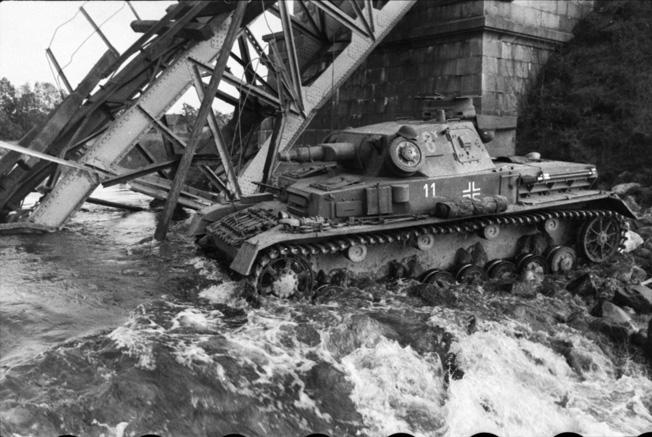
Assault boats were brought forward and, as German artillery from Artillery Regiment 73 hammered Soviet positions on the north shore, Major von Kittel’s II/113 was able to cross and establish a bridgehead. By midnight, the south bank of the Daugava at Jekabpils was firmly in German hands, and engineers were building a bridge to funnel reinforcements to von Kittel.
Red Army’s Respite
Both Reinhardt and von Manstein were now coming under attack by the 27th Army. The 21st Mechanized had also arrived, and Russian units managed to occupy the northern suburbs of Daugavpils, setting off a round of savage house-to-house fighting. The Germans also received reinforcements as the first elements of the Totenkopf entered the city.
Leliushenko’s units were driven back with heavy losses, but Soviet bombers were able to make it through German air defenses to hammer German positions. Arriving Totenkopf soldiers noted, “The greater part of the city has been totally destroyed.”
Reinhardt had also been able to hold his bridgehead as more German forces arrived at Jekabpils. The first great objective on the road to Leningrad had been achieved. Most of the Soviet forces in Lithuania had been destroyed, and the Germans had their crossings in Latvia. With his mechanized forces chomping at the bit, von Leeb was ready for the next stage, but once again, Hitler intervened. This time the order could not be ignored or conveniently “lost.”
Hitler had suddenly become nervous about his army’s success in the north. The enemy was in disarray and the lightning advances in Poland and France had proven the panzers’ ability to strike deep into the enemy’s rear, but he became jittery when looking at the long narrow arrows on the map showing Reinhardt and von Manstein far to the north of the slowly advancing infantry armies on their flanks.
After his success at Daugavpils and the smashing of Leliushenko’s mechanized corps, von Manstein was ready to continue north to prevent the Soviets from regrouping. Instead, he was told to wait until the bulk of Reinhardt’s corps could be brought up to Jekabpils. The wait lasted until July 2, precious days that Kuznetsov used to scrape together the remnants of his command to make another stand. A trickle of reinforcements also made it forward, braving Luftwaffe attacks and bolstering Kuznetsov’s forces. When Reinhardt and von Manstein were finally given orders to resume their attack, they moved on Pskov, about 275 kilometers northeast of Daugavpils and 240 kilometers northeast of Jekabpils.
The Soviets Reorganize
The initial advance of both German corps was marked by sharp clashes with the mechanized forces that had survived the initial June onslaught. Under heavy pressure, the 12th Mechanized Corps and its 35 remaining tanks were forced back by the 1st and 6th Panzer Divisions while the 21st Mechanized Corps fought hard to stall the advance of von Manstein’s corps.
While the mechanized forces grudgingly retreated, reserve divisions were being moved to Pskov to man the so-called “Stalin Line.” Maj. Gen. Mikhail Lvovich Cherniavskii’s 1st Mechanized Corps was on its way from Leningrad and his 3rd Tank Division, commanded by Colonel K. Yu. Andreev, had already occupied woods about 16 kilometers northeast of the city. The 27th Army’s 22nd Rifle Corps (180th and 182nd Rifle Divisions), under Maj. Gen. Mikhail Pavlovich Dukhanov, was moving into Porkhov some 75 kilometers to the east, and Maj. Gen. Kuzma Maksimovich Kachalov’s 24th Rifle Corps (181st and 183rd Rifle Divisions) was in the vicinity of Ostrov, about 55 kilometers south of Pskov. Meanwhile, Maj. Gen. Ivan Stepanovich Kosobutskii’s 41st Rifle Corps (111th, 118th, and 235th Rifle Divisions) was taken from the strategic reserve and sent to Pskov itself.
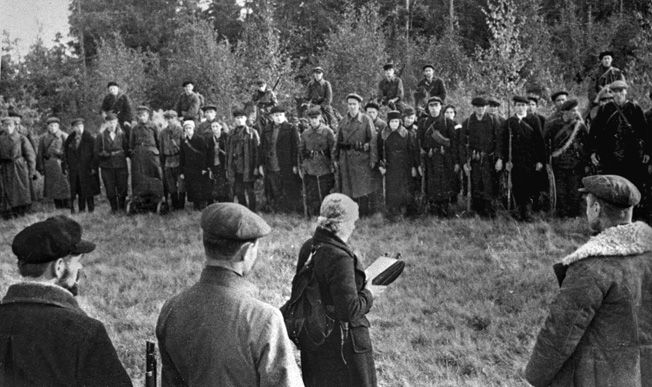
The command structure of the Northwest Front was reshuffled. Kuznetsov was relieved of command for his failures during the first week of the war. Sobennikov took over command of the Front, while Lt. Gen. Fedor Sergeevich Ivanov, the former Deputy Commander of the Southwest Front, took the reins of the 8th Army.
Troubles With Terrain
German forces were hampered more by the terrain than they were by the Red Army as they moved off. Instead of advancing solely along the few roads and railways in the area, the panzer and motorized divisions advanced on a broad front through heavily wooded and marshy areas. Despite those difficulties, the Germans were able to keep pushing the 8th, 27th, and 11th Armies back.
Reinhardt’s corps sector contained the main road to Ostrov, which did allow armored spearheads to advance at a greater pace. Von Manstein was to cover Reinhardt’s right flank and advance toward Sebezh and Opochka in an attempt to outflank the Stalin Line. The going was so bad that Maj. Gen. Kurt Jahn’s 3rd Motorized Division had to halt, change direction, and fall in behind Reinhardt in order to move forward. Eicke’s Totenkopf Division made better progress, but it was slowed by a fortified line in front of Sebezh.
On July 4 Reinhardt’s units were fighting for Ostrov. At 1300, elements of the 1st Panzer Division crossed the old Latvia-Soviet border, and by 1700 the 1st Panzer Regiment was fighting in the streets of the city. The rest of the division was stretched along a wide front, and Soviet columns south of Ostrov were caught unaware as more of the 1st moved forward. Southeast of the city, units of the division reached the Velikaya River and were faced with the bunkers and antitank ditches of the Stalin Line.
While the fight for Ostrov and the Stalin Line was under way, the Soviets were building yet another defensive line along the Luga River. Stavka ordered that the line consist of antitank ditches, strongpoints, and minefields and have a depth of 5-6 kilometers. Lt. Gen. Markian Mikhailovich Popov was assigned to command the overall defenses, and his deputy Lt. Gen. Konstantin Pavlovich Piadyshev was given command of the “Luga Operational Group,” which was centered on the city of Luga, some 95 kilometers south of Leningrad.
At Ostrov, the 1st Panzer Division fended off attacks from Colonel I.M. Ivanov’s 111th Rifle Division and what was left of Andreev’s 3rd Tank Division, and it also came under air attack from Soviet bombers. The divisional history reports that KV I and KV II heavy tanks caused severe damage to the 1st Company of the 37th Anti-tank Unit, whose 37mm shells bounced off the giants as they rolled forward. The situation was saved by the timely arrival of Major Wilhelm Söth, the commander of the III/Artillery Regiment 73, who ordered the field guns of his 9th Company to fire at the Soviet tanks at point-blank range. Söth’s guns destroyed 12 tanks, forcing the others to retreat.
A Two-Pronged Plan of Attack
In von Manstein’s sector, the panzers continued to slog forward. The 8th Panzer Division finally reached the Velikaya early on July 8, hoping to take several key bridges by storm. As the Germans approached, sappers of the 1st Mechanized Corps’ 50th Motorized Engineer regiment blew them up one by one. The final bridge was destroyed along with several panzers that were attempting to cross it.
The day before, Reinhardt, having overcome the defenses of the 24th Rifle Corps at Ostrov and having the advantage of a somewhat decent road, was ready to hit Pskov. The 36th Motorized Division advanced on the corps’ left flank, with the 1st Panzer going up the middle and the 6th Panzer on the right flank. Facing them in front of the city was what was left of the 41st Rifle Corps supported by remnants of the 1st Mechanized Corps.
While the panzers of the 1st and 6th fended off attacks from Soviet mechanized units, Ottenbacher led his 36th into Pskov and became involved in heavy house-to-house fighting. The Soviets were tenacious in their defense, and artillery had to be used along with Luftwaffe bombers to break their positions. After taking severe losses, the remaining Russians abandoned the burning city on July 9. Another step toward Leningrad had been taken.
The OKH (Oberkommando des Heeres—German Army High Command) finally realized the futility of trying to flank the Russians from the east, so von Manstein was ordered to disengage and head to Ostrov. With von Manstein on the way and Reinhardt consolidating his positions along the Velikaya, Hoepner received a new directive. Panzer Group 4 was to launch a two-pronged attack, with Reinhardt driving to Luga and von Manstein heading toward Lake Ilmen in a flanking movement.
74,000 Killed or Missing
The odds for success looked good. The Northwest Front, which had started the war with 23 divisions, had lost about 74,000 men killed or missing with another 130,000 wounded. Of the original divisions, only seven were near full strength, while 11 had only 2,000 to 3,000 men fit for combat. Some of the 14 new divisions that had been released to the Front also suffered heavily.
Material losses had been horrendous. More than 2,500 tanks, 3,500 artillery pieces, and 900 aircraft had been lost.
Reinhardt jumped off on July 10 supported by General Wilhelm von Chappius’s XXXVII Army Corps, which had moved from the 18th Army to Panzer Group 4. The 118th Rifle Division, which had come from the Moscow Military District, was hard hit. It retreated toward Gdov, a town on the shore of Lake Peipus. This retreat opened a gap in the Soviet line, leaving the road to Luga open.
To stop the Germans from exploiting the breach, Colonel I.M. Golubev’s 90th Rifle Division was ordered to plug the hole. Stationed around Strugi-Krasnoye, about 65 kilometers northwest of Pskov, Golubev’s division was caught on the march by the Luftwaffe, totally disrupting the movement.
The 1st and 6th Panzer Divisions fought their way through scattered Soviet units and headed toward Luga. To their right, the 58th Infantry 36th Motorized Division moved on Gdov. On July 12 the 1st Panzer ran into the 90th Rifle Division and a running battle ensued, ending with the 90th finally giving way. By evening, the 1st Panzer was 30 kilometers southwest of Luga but was stalled by a strong defensive line guarding its approaches.
To Reinhardt’s right, von Manstein moved toward Lake Ilmen. The 3rd Motorized Division took Porkhov after a particularly fierce battle and then turned north, while the 8th Panzer headed toward Soltsy, a town about 50 kilometers southwest of Novgorod. Fighting both Russians and bad terrain, Brandenburg’s panzers and armored infantry finally captured Solsty on July 14.
Fighting for Lake Samra
In the Luga sector, Reinhardt had hit a stone wall. Repeated attacks failed to pierce Luga’s forward defenses, and the Luga Operational Group had received reinforcements in the form of Maj. Gen. Ivan Gavrilovich Lazarev’s 10th Mechanized Corps (21st and 24th Tank Divisions and 131st Mechanized Division) and the remnants of the tenacious 41st Rifle Corps.
Frustrated, Reinhardt turned his forces toward Sabsk and Kingisepp. Northeast of Luga, the 1st Panzer Division’s Battle Group Krüger with a battle group of the 6th Panzer under Colonel Erhard Raus, moved around the swampy land southeast of Lake Samro and fought off Russian attacks along the highway leading to Sabsk. Defensive positions were established by the Germans around key villages such as Lyady and Alexino, which the Soviets strove to recapture. The 36th Motorized Division followed in the wake of the battle groups.
By July 15, Major Eckinger’s I/Rifle Regiment 113, the spearhead of Battle Group Krüger, was fighting its way through the village of Osmino. Reinforced by following elements that threw up a defensive perimeter around the village, Eckinger headed north once again with the II/Rifle Regiment 113 close on his heels.
In the early evening, the spearhead entered Sabsk and established a small bridgehead on the opposite bank of the Luga. As with most panzer generals, Maj. Gen. Kirchner liked to be at the forefront of the battle. On his way to Sabsk, Kirchner was wounded by a shell splinter. He relinquished command of the 1st Panzer to Krüger, who oversaw the defense of the bridgehead and the protection of his flanks.
With more units arriving, Reinhardt ordered the 36th Motorized Division to expand the defensive flank to the west of Lake Samra. The division’s 118th Motorized Infantry Regiment, under Colonel Carl Caspar, took up positions in the villages of Borki and Zaruch’e on the western side of the lake to await the inevitable Soviet counterattack.
A New Defensive Line
Moscow realized that the weakened and raw divisions along the Luga could not do anything but buy time. Therefore, formation of a new line of defenses was begun. Worker battalions from Leningrad joined children and the elderly to build a new line between the mouth of the Luga and Chudov, located about 125 kilometers southeast of Leningrad on the Moscow-Leningrad Highway. Thousands toiled to construct miles of trenches, pillboxes, minefields, and antitank positions, but the question remained whether a strong line could be built in time.
While Reinhardt worked on consolidating his bridgeheads across the Luga, von Manstein was slugging his way toward Novgorod. With the 8th Panzer in the lead, the LVI Corps fought off attacks from Morazov’s 11th Army around Soltsy and, even worse, the corps was in danger of becoming isolated. Russian forces took advantage of the long, mostly undefended flanks of the corps.
At 0300 on the 15th, von Manstein received the following message at his headquarters west of Soltsy: “Rear areas of the 8th Panzer Division, three kilometers east of Borovichi, are defending against an enemy attack with machine guns and mortars.”
That attack and others along the 8th Panzer’s supply lines effectively isolated the bulk of the division’s combat forces. Meanwhile, Soltsy was being attacked from the north, while other Russian forces crossed the Shelon River and attacked the town from the south. Von Manstein decided that Soltsy was to be abandoned, with German troops establishing defensive positions south of the town.
Janh’s 3rd Motorized Division was also facing heavy enemy attacks as it attempted to move north. In effect, the Soviets were striving to isolate and destroy the entire corps.
To alleviate the situation, elements of the Totenkopf were sent north. Within hours lead elements of the division were on the move. Eicke had been wounded when his command car hit a mine on July 6. His replacement, Brig. Gen. Georg Keppler, wasted little time in getting the rest of his division going. Moving up the Dno-Soltsy road, the division slammed into Russian infantry, pushing them back toward the southeast. It also sent a reinforced battalion to help Jahn, who was fighting off repeated Soviet attacks.
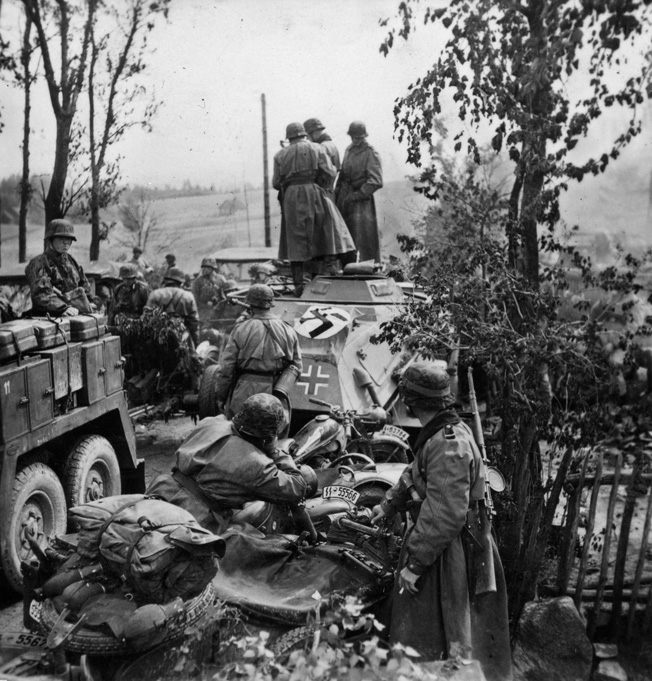
Von Manstein’s corps was fending off attacks from several Soviet rifle divisions as well as Maj. Gen. Nikifor Gordeevich Khorudzenko’s 220th Motorized Division, Andreev’s 3rd Tank Division, and Colonel L.V. Bunin’s 21st Tank Division. Once the Totenkopf had cleared the supply route, the situation was much better with ammunition, fuel, and food making their way northward once again. With the news that General Hans Kuno von Both’s I Army Corps (11th and 21st Infantry Divisions), which had recently been subordinated to Panzer Group 4, had cleared Soviet units from Dno and was advancing on Soltsy, it seem as if the advance on Leningrad could continue.
The Russians had other plans. Maj. Gen. Herbert von Böckmann’s 11th Infantry Division retook Soltsy on the 21st, but was immediately counterattacked by the Russians while the 11th Army, which had been reinforced with two rifle divisions, hit other parts of von Manstein’s line.
On July 23, the Russians on the Luga received a new commander. For his previous week’s failure, Piadyshev was relieved and later executed. His former commander, Lt. Gen. Popov, assumed the position of commander of the Luga Operational Group while still holding his overall command of the Northern Front.
Merging Von Manstein and Reinhardt
While the new fighting had stalled the Germans for the moment, the toll of Russian dead and wounded grew. Sensing a chance for a breakthrough, both von Manstein and Reinhardt proposed that their corps be united for a concentrated action. Von Manstein wanted to move his corps to Reinhardt’s sector, where the better road network would allow both corps to advance side by side instead of having his corps move through the swampy wooded area surrounding Lake Ilmen. Reinhardt concurred, but Berlin did not.
Hitler worried about his precious panzer divisions’ supply lines, which had shown themselves to be open to attacks and raids by Soviet units. He therefore ordered the halt of offensive operations in von Manstein’s sector until the infantry of the 16th Army could be brought up to secure his right flank.
Von Leeb was tempted to order Reinhatdt’s corps to resume the attack on his own, but instead he told Hoepner to use the corps to finish clearing the south bank of the Luga. After a bitter struggle, Reinhardt succeeded in clearing the Soviet bridgehead at Kingisepp, although the town, located on the opposite bank of the river, was still in the hands of the Red Army.
During the next few days, the 16th Army arrived, taking up positions along the Shelon. To the east, the 18th Army was clearing out the rest of Estonia and was advancing toward Narva, securing Reinhardt’s left flank.
In the interim, Hitler decided that the terrain around Lake Ilmen was indeed not suitable for armored operations. On July 30, Halder noted in his diary: “It is becoming evident that OKH is revising its erstwhile notions and no longer insists on the impossible demand for Army Group North to cut off the eastward retreat route (Manstein’s mission) of the enemy around Leningrad.”
Consequently, it was decided that von Manstein should join forces with Reinhardt for a renewed thrust to Leningrad. While pleased, von Manstein ran up against a new set of orders that reshuffled his corps. The Totenkopf would be attached to the 18th Army, while the 8th Panzer would go into the Panzer Group Reserve. In their place von Manstein received Brig. Gen. Ernst von Leyser’s 269th Infantry Division and Maj. Gen. Arthur Mülverstedt’s 4th SS “Polizei” Infantry Division. That left von Manstein with only one motorized unit—Jahn’s 3rd.
Frustration With Berlin
The Soviets still held onto the town of Luga. While Reinhardt was clearing out Kingisepp, which would hold out for a while longer, and established a bridgehead on the northern bank of the river near the city, part of his corps rushed toward Narva to secure a connection with the 18th Army. At the Luga bridgehead itself, the Russians had rushed two divisions to the area by rail along with some brand new KV I and II tanks, fresh from the factories of Leningrad.
Reinhardt was still furious that the opportunity for a joint attack with von Manstein had been frustrated by Berlin for so many days. In his diary he noted: “Time and again our corps urged a speedy resumption of the attack and asked that some units, at least of von Manstein’s corps, should be switched over to us, especially as they were bogged down where they stood. But it was all in vain…. More delays. It’s terrible. The chance that we opened up has been missed for good, and things are getting more difficult all the time.”
With Reinhardt occupied in the east, it was up to von Manstein to take Luga. The continuous march and countermarch of his corps took up precious time, leaving the Luga front virtually stagnant for several days. That time was used by the Soviets to funnel more reinforcements to the Northwest Front in the form of nine rifle and two cavalry divisions. I.I. Pronin’s 34th Army (five rifle and two cavalry divisions) was detached from the Reserve Front, and Lt. Gen. Stephan Dmitrievich Akimov’s 48th Army (one militia, one tank, and three rifle divisions plus a mountain brigade) would also soon be sent to bolster the line.
A Revitalized Soviet Opposition Force
While von Manstein marshaled his units for the assault on Luga, things were going fairly well in other sectors of the northern front. Elements of the I Army Corps reached Schimsk on July 30, and around Lake Ilmen the X Army Corps was moving toward Staraya Russa while encountering heavy resistance from the 11th Army. By August 6, both Staraya Russa and the city of Kholm were in German hands, strengthening a German line along the Lovat River.
The sky had opened up early on August 8, bringing a heavy downpour, when Reinhardt and von Manstein were finally set to renew their drive toward Leningrad. The assault was to be three-pronged with a southern group composed of von Both’s I Army Corps and General Mauritz von Wiktorin’s XXVIII Army Corps, both from the 16th Army, attacking Akimov’s 48th Army along a line running from Schimsk-Novgorod-Chudovo, rolling up Leningrad’s southeast flank. Von Manstein was to attack directly up the Luga Road while Reinhardt, supported by Von Chappius’s XXXVIII Army Corps, would attack toward Leningrad from his bridgehead near Kingisepp, while the battle for the city still went on.
In pouring rain, which prevented any Luftwaffe support, Reinhardt moved out with the 36th Motorized Division in the lead. Instead of the relatively weak Soviet forces that had faced them a week ago, the Germans found a line of newly constructed field positions manned by Maj. Gen. Pavel Patrovich Bogaichuk’s 125th Rifle Division and Colonel Sergii Vasilevich Roginskii’s 11th Rifle Division. What was supposed to be a swift German advance soon turned into a brawl as Reinhardt pushed forward while the Soviets fought for every meter of ground. Reinhardt was still struggling to break out from his bridgeheads the following day.
The Fight for Luga
By the 9th the I and XXVIII Army Corps were in a bitter fight with the 48th Army around Novgorod. Meanwhile, von Manstein, plagued with parrying Soviet spoiling attacks, finally moved on Luga on August 10 when his 3rd Motorized Division launched a frontal assault on the town. The Soviets put up a spirited resistance, and the 4th SS and 269th were called in to support the motorized units.
The wooded area around the town provided excellent cover for the Russians. The 4th SS ran into a line of bunkers west of Luga, and in the bitter fighting that ensued Maj. Gen. von Mülverstedt was struck by a shell fragment and killed. Around the city itself, the fighting continued unabated.
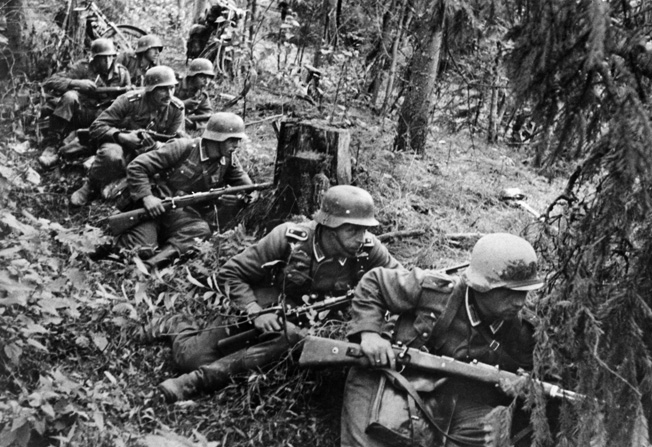
On August 11, Reinhardt pierced the Luga River defenses and established new bridgeheads southeast of Kingisepp at Bolshoi Sabsk and Ivanovskoye. For the next couple of days, the bridgeheads were reinforced as the forces inside them fought off several Soviet attacks. The road to Leningrad seemed to be opening up again, but before Reinhardt could continue he had to secure his left flank, which was threatened by Soviet units retreating toward Leningrad from Estonia.
Hoepner pleaded with von Leeb to release one or two divisions to protect Reinhardt. After a heated discussion, von Leeb finally agreed to pull the 3rd Motorized Division out of the Luga battle and send it to Reinhardt. On August 15 the 3rd, along with von Manstein’s corps headquarters, was ordered to join Reinhardt. Responsibility for taking Luga now fell to General Georg Lindemann’s L Army Corps.
The Luga Line Falls
With the LVI Corps Headquarters in the lead, von Manstein moved out with the 3rd Motorized Division trailing. Von Manstein had hardly reached his new headquarters position when he received orders for the 3rd to turn around and head toward Staraya Russa, where the X Army Corps had been encircled by the 34th Army. He reached Dno on the 16th and received word that the Totenkopf Division would again be placed under his command for a relief attack. Meanwhile, Reinhardt had finally taken the city of Kingisepp while von Both and von Wiktorin’s corps entered Novgorod amid heavy fighting.
While von Manstein waited for the 3rd Motorized and the Totenkopf to arrive at their jump-off positions, Reinhardt continued to press the Soviets. With the Luga Line crumbling, he ordered elements of his corps to push forward to Narva, flank protection or not. That city fell on August 17, cutting off stragglers from the 8th Army who were trying to flee to Leningrad.
On August 19, von Manstein struck the 34th Army, coordinating his attack with the encircled forces that hit the Russians from within the pocket. The Soviets were taken completely by surprise. In three days of fighting, von Manstein stated that 12,000 prisoners were taken and 1,412 tanks and 246 guns were either captured or destroyed.
Capturing Luga
Hoepner’s armor was now scattered across the front, with Reinhardt pushing toward Krasnogvardievsk from his positions east of Narva, the 8th Panzer still near Luga, and von Manstein, with the 3rd Motorized, helping the infantry push the Russians back to the Pola River toward Demyansk. There was, however, some good news for Hoepner when he heard that General Rudolf Schmidt’s XXXIX Motorized Corps was being transferred from Army Group Center to Army Group North. The corps, consisting of the 12th Panzer and 18th and 20th Motorized Divisions, would be attached to the 16th Army, but it would give Army Group North an added armored punch for the drive on Leningrad.
Even though Panzer Group 4 could not concentrate its armor in one place, the individual units kept up pressure on the enemy, but they did run into some roadblocks. In the Krasnogvardievsk area, Reinhardt ran into a strong set of defenses. Backed up by antitank positions, the Soviet infantry kept the Germans at bay for several days.
At Luga, the Polizei Division mounted a frontal attack on August 24. The fighting was extremely savage, with both sides taking horrendous casualties. Colonel Hans-Christian Schulze, leading elements of his Police Rifle Regiment 2, pressed into the town from the east after finding a bridge that had not been destroyed by the Russians. By 1700 he reported the town had been captured.
As the Soviets were pushed back, the 8th Panzer, down to a third of its original strength, reached Siversky on the Luga-Krasnogvardievsk rail line. It then turned south to meet the retreating Russians coming out of Luga. In heavy rain, the division’s rifle regiments set up a line in the forest to intercept and destroy the Russians, often engaging groups of 500 to 1,000 as they tried to escape.
Shattered Momentum of Panzer Group 4
By now, with his corps basically chopped apart, von Manstein was out of the Leningrad operation. Instead, his corps headquarters and the units still with him were heading toward Demyansk, some 285 kilometers southeast of his original objective. Bogged down by torrential rains, the corps eventually lost the 3rd Motorized Division to the 9th Army. Von Manstein stayed in command of the corps until September 12, when he was given command of the 11th Army, which was fighting near the Crimean Peninsula far to the south.
Hoepner’s Panzer Group 4 was now reduced to the 1st and 6th Panzer and the 36th Motorized Divisions of Reinhardt’s corps and the 269th and Polizei Infantry Divisions of Lindemann’s corps, with the battered 8th Panzer once again in reserve. While Lindemann’s divisions were fighting their way toward Krasnogvardievsk, Reinhardt was looking for a way to outflank that position.
The stubborn Russian defense of Luga and the line at Krasnogvardiesk had cost the Red Army thousands of casualties, but each day they held bought Stalin precious time to strengthen the defenses outside Leningrad. Tens of thousands of civilians labored day and night, building antitank ditches, artillery and machine-gun positions, and trenches and strongpoints for the infantry that was now pouring into the city.
The race to the Daugava, breaching the Stalin Line, and the advance to the Luga had seemed too good to be true for the Germans. Now, the chances of taking Leningrad with another lightning attack seemed nothing more than a dream —a dream that had been shattered with Russian blood.
Reaching the Great “White City”
Reinhardt was finally on the move again during the last days of August. With the 36th Motorized again in the lead, his corps took Izhora, about 18 kilometers south of Leningrad, on the 28th while German infantry strove to break the defenses at Krasnogvardiesk. The panzers were literally on Leningrad’s doorstep. To the east, Schmidt’s corps took Mga on the 30th but was forced back by a fierce counterattack from the 48th Army. It was recaptured by the 20th Motorized Division on September 1. With the fall of the city, the last rail link between Leningrad and the rest of the Soviet Union was severed.
Rain began to fall again during the first days of September, hindering the movement of the German mechanized units. While waiting for the roads to dry, von Leeb made his final plans for the assault on the great “White City” on the Neva.
By now, however, Hitler had another change of heart. Instead of conquering Leningrad outright, he ordered that the city be encircled and besieged. Von Leeb was furious and he would resign a few months later, partly due to that decision.
Nevertheless, he went forward with plans that would now give his forces the most favorable positions to bombard the city and starve it into submission.
A Two-Pronged Attack
His first aim was to capture crossings on the Neva with a two-pronged thrust.
The first group consisted of von Chappius’s XXXVIII Army Corps (1st, 58th, 254th, and 291st Infantry Divisions), Reinhardt’s corps (1st and 6th Panzer and 36th Motorized Divisions) and Lindemann’s L Army Corps (269th and SS Polizei Infantry Divisions). Its job was to take Krasnogvardievsk and cut off Soviet forces west of Leningrad. The 8th Panzer was held in reserve behind Reinhardt.
A second group was made up of von Wiktorin’s XXVIII Army Corps (96th, 121st, and 122nd Infantry Divisions) and elements of the 12th Panzer. Its objectives were the cities of Slutsk and Kolpino. Farther to the east, Schmidt’s corps (20th Motorized and the rest of the 12th Panzer) was tasked with widening the Lake Ladoga corridor and then fanning out to protect its eastern flank.
While the Germans were deploying, the Soviet command structure underwent another change as the Northwest Front was disbanded, its forces being absorbed by the Leningrad Front. Marshal Klement Efremovich Voroshilov, who had overseen the catastrophic attack on Finland in the 1939-1940 Russo-Finnish War, was placed in command of the combined forces on September 5, a day after the German assault began.
In Leningrad itself, divisions of Red Militia were formed from the city’s industrial workers to augment the Red Army troops manning the defenses. There was an outer defensive line running from Petrodvortsovyy, about 19 kilometers west of Leningrad, through Krasnogvardievsk and then to the Neva River at a point about 20 kilometers east of Leningrad. The inner line ran from just west of Leningrad and then east with the town of Mozhayskiy and its surrounding hills and Kolpino as its strongpoints.
According to the German plans, Reinhardt’s corps would head toward Mozhayskiy, while Lindemann’s corps would crack the Krasnogvardievsk defenses. The area in front of Reinhardt contained hundreds of field fortifications connected by an elaborate network of trenches. Strong gun emplacements and wide antitank ditches also peppered the area, so it would be up to Ottenbacher’s 36th Motorized Division to make the first assault. Once the infantry had breached the forward enemy defenses, the 1st Panzer would follow with the 6th Panzer standing ready to advance and widen the breach.
The Opening Assault
On September 4, German 240mm guns placed north of Tosno opened fire on Leningrad. To the east, Schmidt and von Wiktorin began an assault aimed at Shisselburg, a city on the mouth of the Neva about 30 kilometers from Leningrad’s suburbs. A weakened 48th Army held positions in front of the town, and its line crumbled under attacks from the 12th Panzer and 20th Motorized Divisions. Shisselburg was captured on September 8, closing the last land route out of Leningrad.
Hoepner began his assault on September 9. Reinhardt, supported by von Chappius’s infantry, cut through the Soviet lines and advanced almost 10 kilometers with the 1st Panzer and the 36th Motorized in the lead. Recovering from the initial shock, the newly formed 42nd Army put up a stout resistance.
The Soviet divisional commanders were ordered to fight for every meter of land, and their men did so magnificently. Landgraf’s 6th Panzer became bogged down in heavy fighting in front of Krasnoe Selo, while the 1st Panzer and 36th Motorized sat astride the Krasnogvardiesk-Krasnoe Selo road, fending off Russian attacks. Von Chappius’s infantry was also halted by the Soviet defense, which was helped by fire from the Baltic Fleet anchored around Kronstadt Island.
Later in the day, Colonel Carl Casper took his 118th Motorized Rifle Regiment of the 36th Motorized Division and, backed by divisional engineers and elements of the 1st Panzer, breached the enemy line. He then headed toward the Mozhayskiy Hills. The Soviet defenses there were manned by fanatical units of Young Communists, battalions of Leningrad Workers Militia, and units of the 55th Army that had so far been held in reserve. They were backed up by Red Army artillery, which had pretargeted every meter of ground so that artillery observers could call in a strike within seconds of seeing the enemy.
Casper’s men moved forward under a rolling barrage from guns of Artillery Regiment 73 and XLI Corps artillery, while the 1st Panzer units engaged pillboxes at point-blank range. The Soviet bunkers were solidly built, and a call was sent for Luftwaffe support. In about half an hour, Stukas from General Wolfram Freiherr von Richtofen’s (a cousin of the famous Red Baron) VIII Air Corps arrived on the scene. Diving almost vertically, the dive bombers hit the Soviet positions with devastating effect.
Before the smoke cleared, German assault groups leaped forward. Using flamethrowers, grenades, and machine guns, Casper’s men took one enemy position after another. The fighting finally ended when it was too dark to see.
Taking “Bald Hill”
On the morning of the 10th, Casper ordered the assault to continue. Once again, progress was somewhat slow for the men of the 118th. To their right, Landgraf’s 6th Panzer was hit by a Russian counterattack that caused many casualties and momentarily stopped the division in its tracks. When Landgraf got moving again, Reinhardt, seeing an opportunity, ordered him to attack the Soviet flank farther to the east. He then moved most of the 1st Panzer into the gap left by Landgraf, bringing more pressure on the Russian defenses. Late in the evening, the Germans had reached a trench line on the northern ridge of the hills.
With the 1st Panzer in the line, the attack moved forward again on the 11th. Eckinger’s I/113th Rifle Regiment, reinforced by a company of the 1st Panzer Regiment and a platoon of engineers, was in the lead. Von Richtofen’s Stukas arrived right on time and blasted a path through the Soviet positions. With Colonel Westhoven’s 1st Rifle Regiment providing flank support, Eckinger headed for Hill 167, known as “Bald Hill.” The 6th Panzer Company, commanded by 1st Lt. Wolfgang Darius, and the leading company of Eckinger’s battalion hit a naval artillery battery and succeeded in destroying the guns before the surprised Russians could fire a shot at them. At 1230 Darius sent the following message to his battalion headquarters: “I can see St. Petersburg (Leningrad) and the sea.” Hill 167 had finally fallen.
While the Germans consolidated their positions in the Mozhayskiy Hills, the main elements of the 36th Motorized, backed up by units of the 1st Panzer, attacked Krasnoe Sela, which fell on September 12. Leningrad’s defenses were nearly broken now that the 1st Panzer and 36th Motorized had outflanked Krasnogvardiesk, putting the rear areas of the Soviet units defending Slutsk and Kolpino in peril.
Zhukov Arrives in Leningrad
On September 13, Stalin ordered General Georgii Konstantinovich Zhukov to fly to Leningrad. With him were Lt. Gens. Ivan Ivanovich Fedyuniskii and Mikhail Semenovich Khozin. When his aircraft landed, Zhukov went straight to Voroshilov. He handed him a note from Stalin appointing Zhukov commander in chief of the Front. It was brief. “Hand over the Front to him and come back by the same plane,” it said. The note was simply signed “Stalin.”
The same day, Reinhardt and von Chappius breached the lines of the 42nd Army north of Krasnoe Sela and advanced toward Uritsk. Krasnogvardiesk was also taken by the L Army Corps which was supported by elements of Reinhardt’s corps.
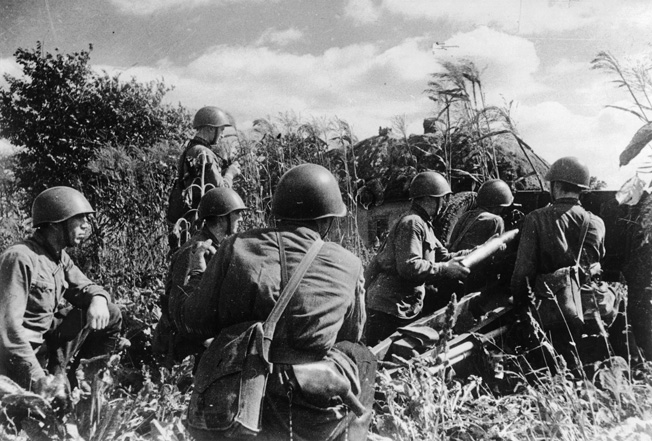
Zhukov sent Fedyuinskii to the 42nd Army Headquarters where he found Ivanov, its commander, “sitting with his head in his hands, unable even to point out the location of his troops.” Reporting the situation to Zhukov, Fedyuinskii received a simple order: “Take over the 42nd Army—and quick.”
While Panzer Group 4 continued to press Leningrad’s defenses, Zhukov worked tirelessly to stop the entire German advance. On the 14th he reached into his reserves and sent a rifle division to Fedyuinskii to help defend Uritsk. He planned to use the 42nd Army as a defensive bulwark while forces behind it dug into new positions. He also ordered the recently formed 55th Army under Maj. Gen. Ivan Gavrilovich Lazarev to defend the Kolpino and Pushkinskiy sectors at all costs and for Marshal Grigorii Ivanovich Kulik’s 54th Army to recapture Mga and Shisselburg.
Panzer Group 4: Short of Triumph at Leningrad
September 15 saw heavy fighting at Uritsk, while Kulik struggled to take his objectives. In the end, Kulik would fail and he was demoted to major general. Hoepner lost another armored unit that day when the 6th Panzer was pulled out of the line in preparation for the move to Army Group Center, which was preparing the assault on Moscow.
Units of the 1st Panzer, Polizei, and 269th Infantry Divisions entered Pushkinskiy on September 16, with the Soviets fighting for every block of the town. New battalions rushed to help defend the area, but the Germans continued to push forward, finally capturing the town two days later. The 1st Panzer then turned toward Leningrad again but was halted by units of the 42nd Army in front of the city.
The following day, Zhukov basically stabilized the front at Uritsk, although fighting in the city’s suburbs was still raging. German forces still had a ring around the land approaches to Leningrad, but the city’s defenses had held. Reinhardt began pulling the 1st Panzer and 36th Motorized out of the line that day. Along with his corps headquarters, the units would soon follow the 6th Panzer to deploy for the Moscow offensive. Panzer Group 4 Headquarters also prepared to move southeast for the offensive.
Schmidt’s XXXIX Corps with its armored and mechanized divisions would remain with Army Group North for a few more months, but it would now be up to the infantry and Luftwaffe to force Leningrad’s surrender. They would not succeed. For Panzer Group 4, which had started the war with great victories and high hopes, there would be no triumphal panzer parade through the streets of the “White City” on the Neva.
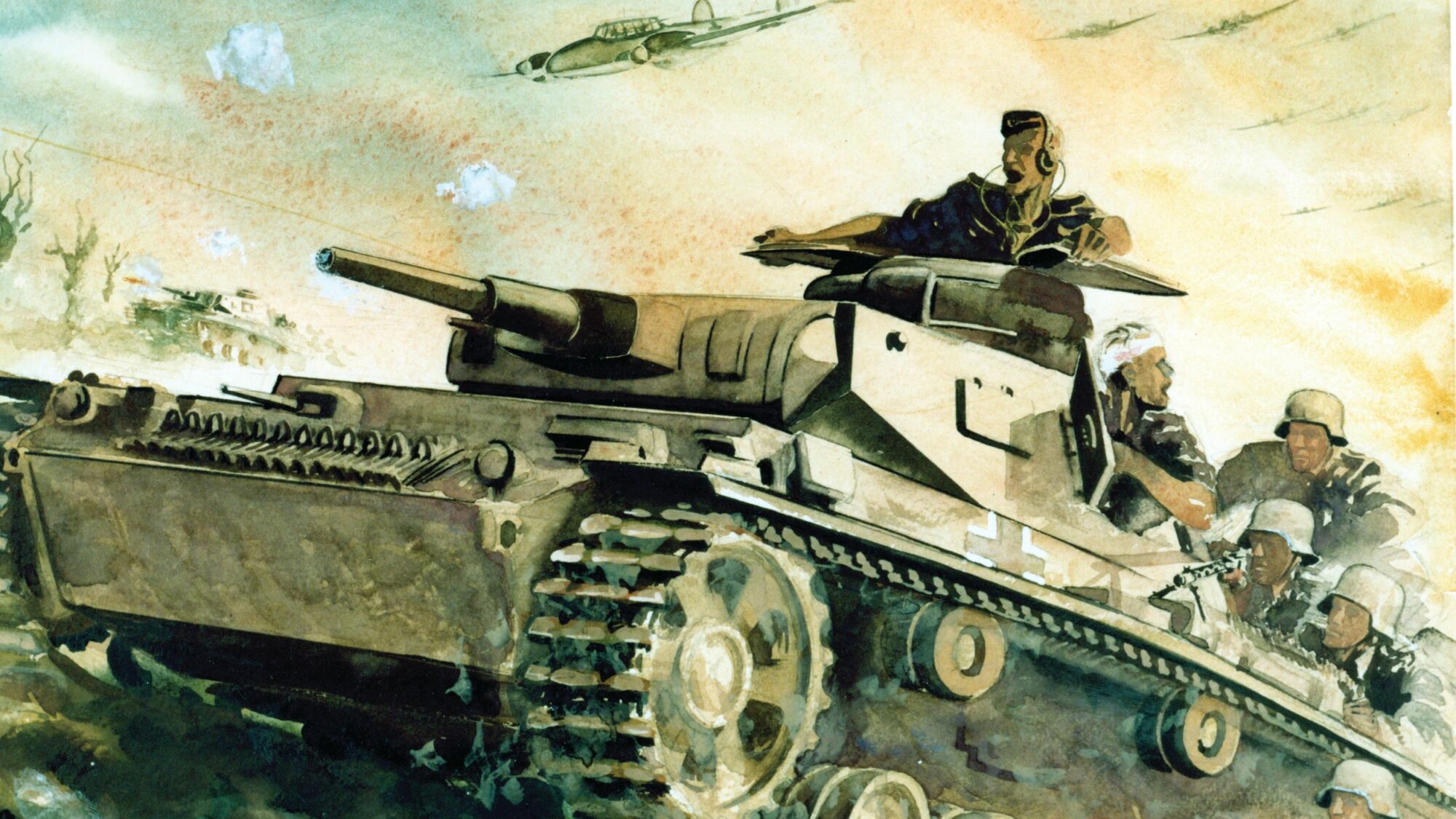
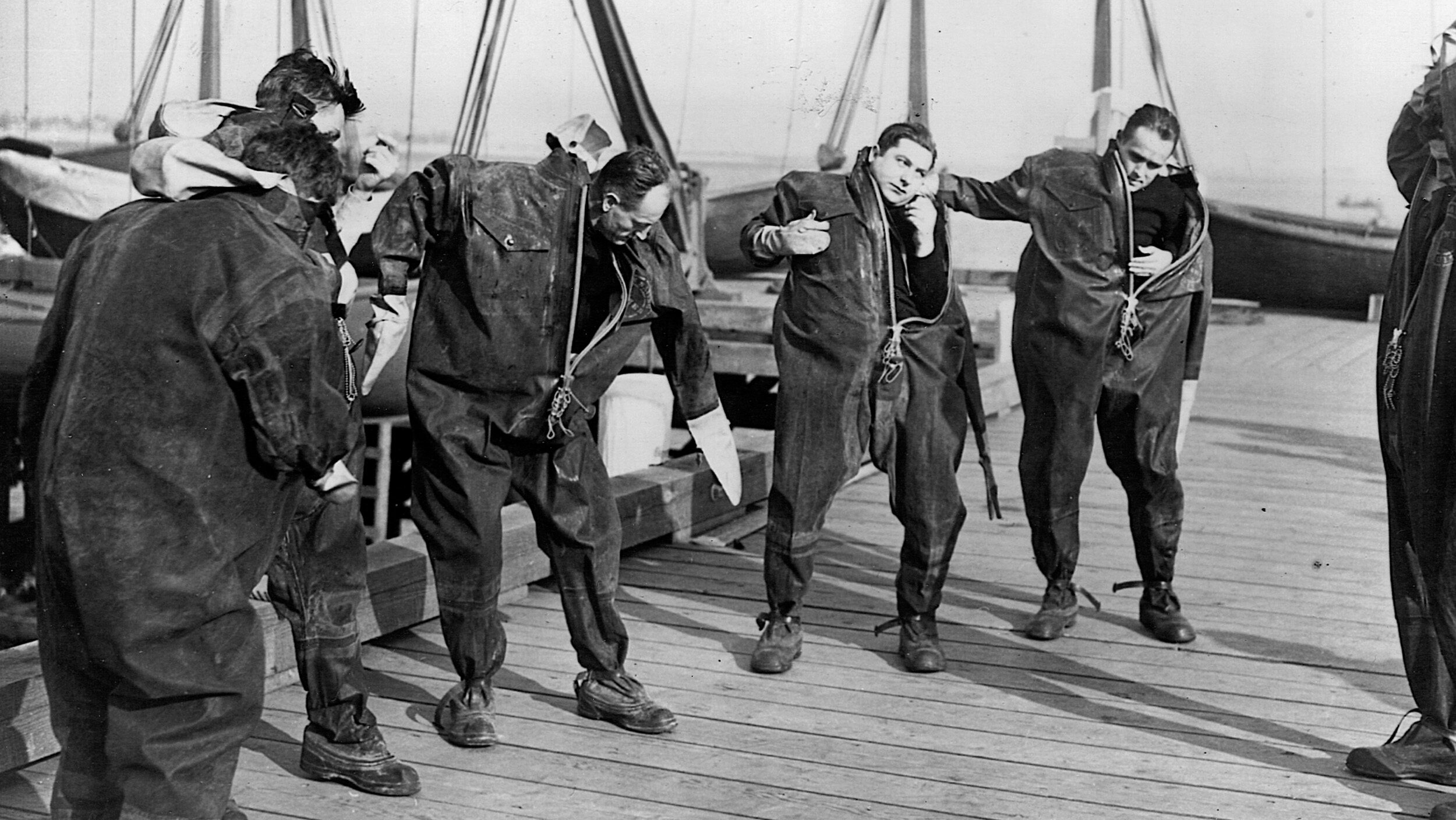
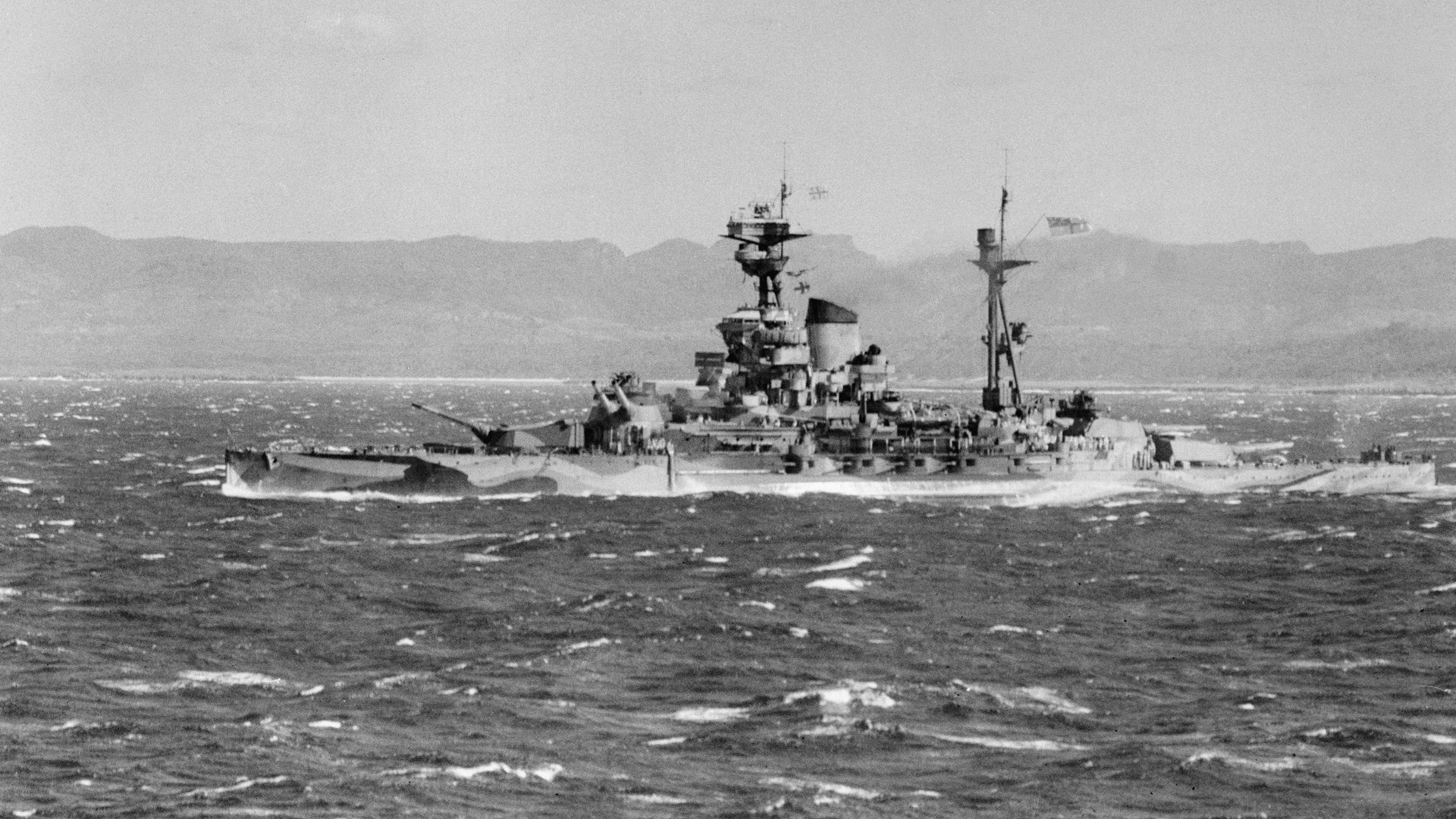

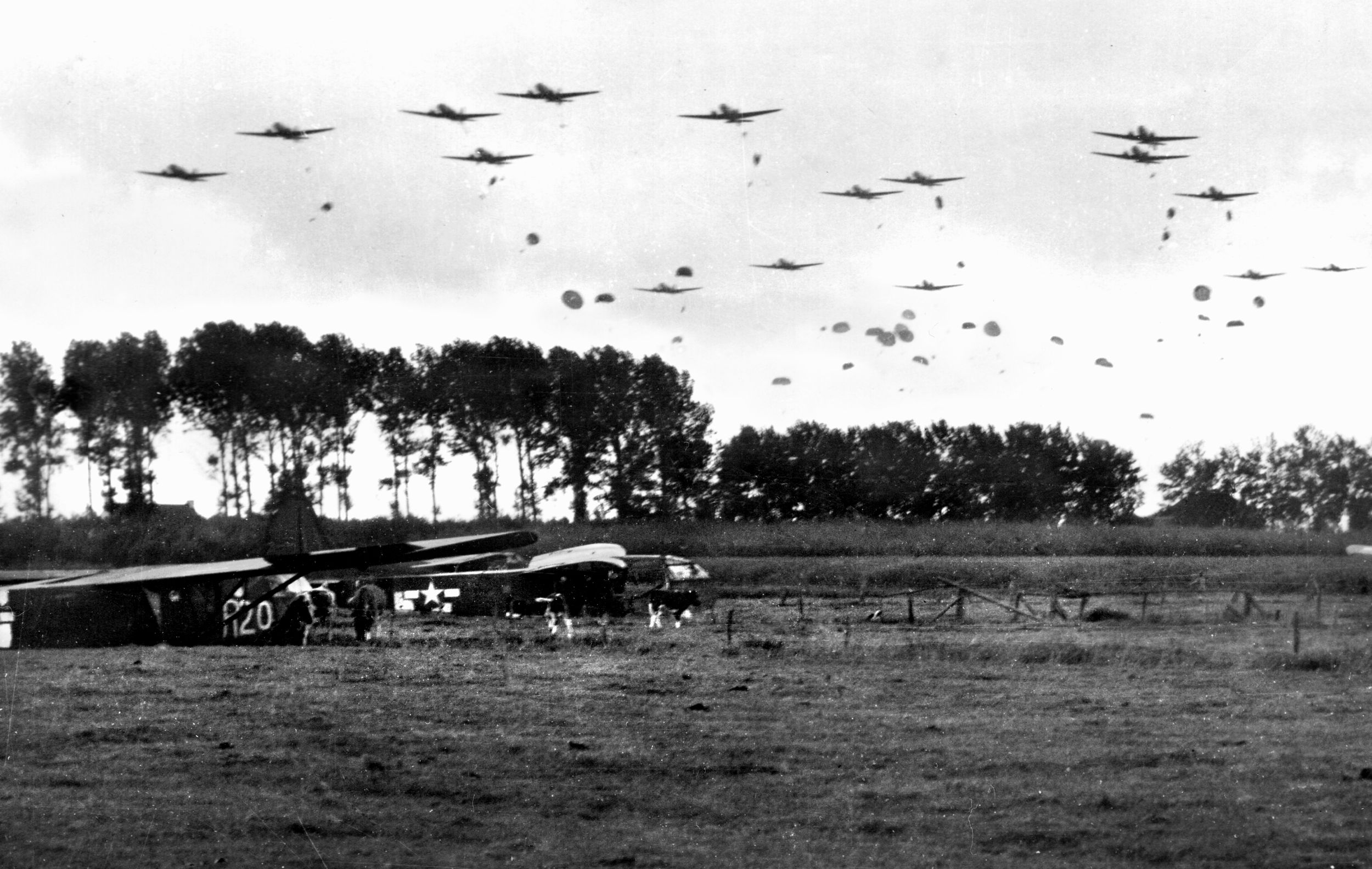
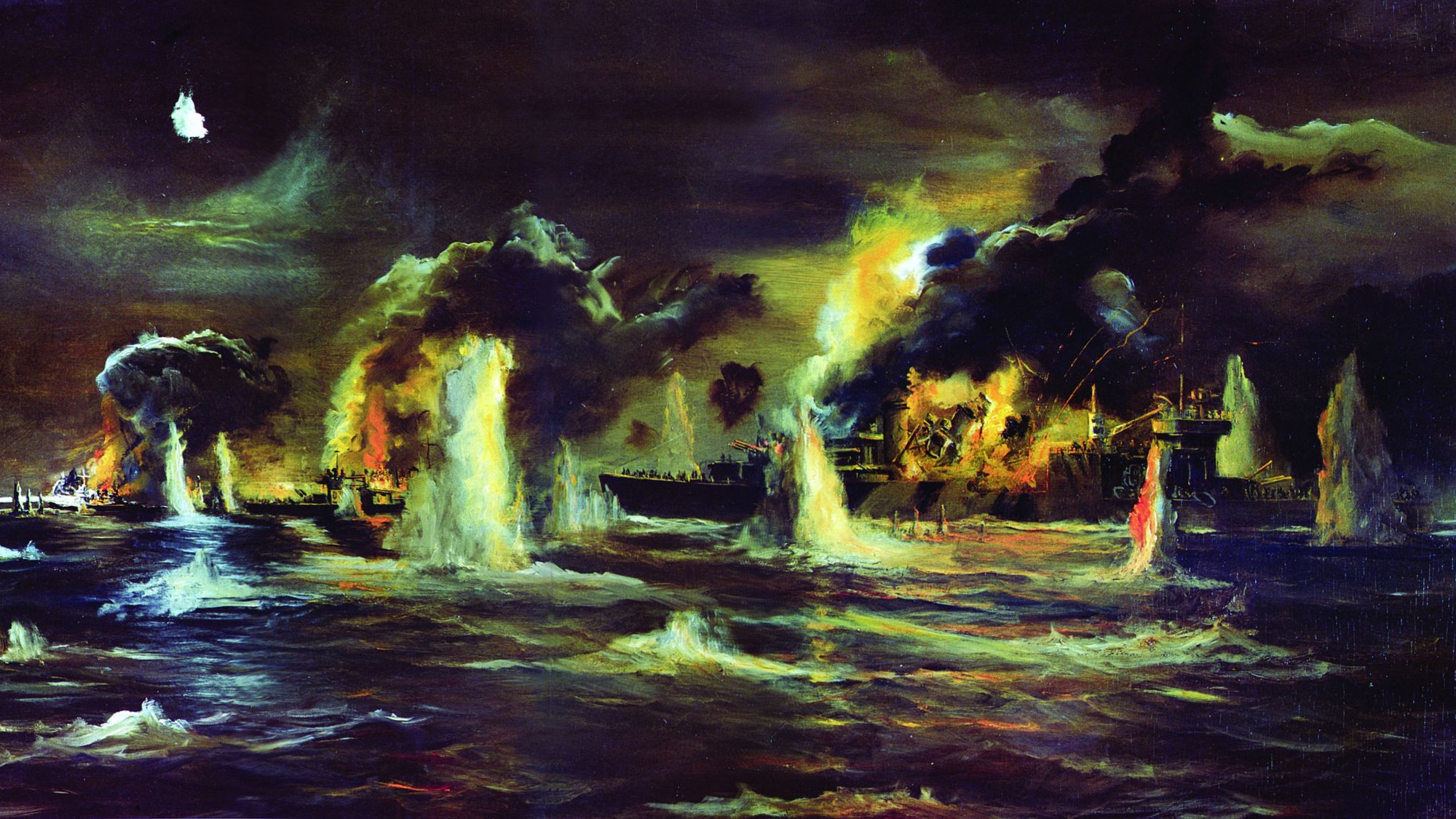
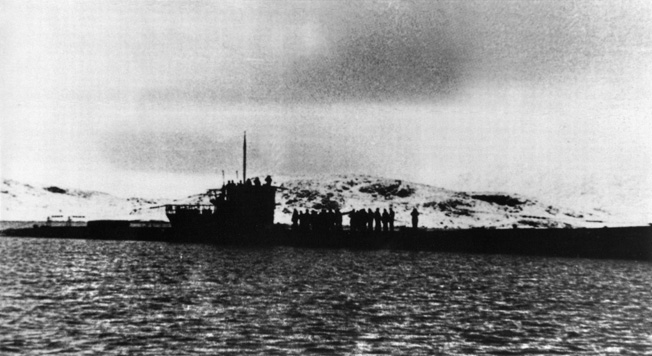
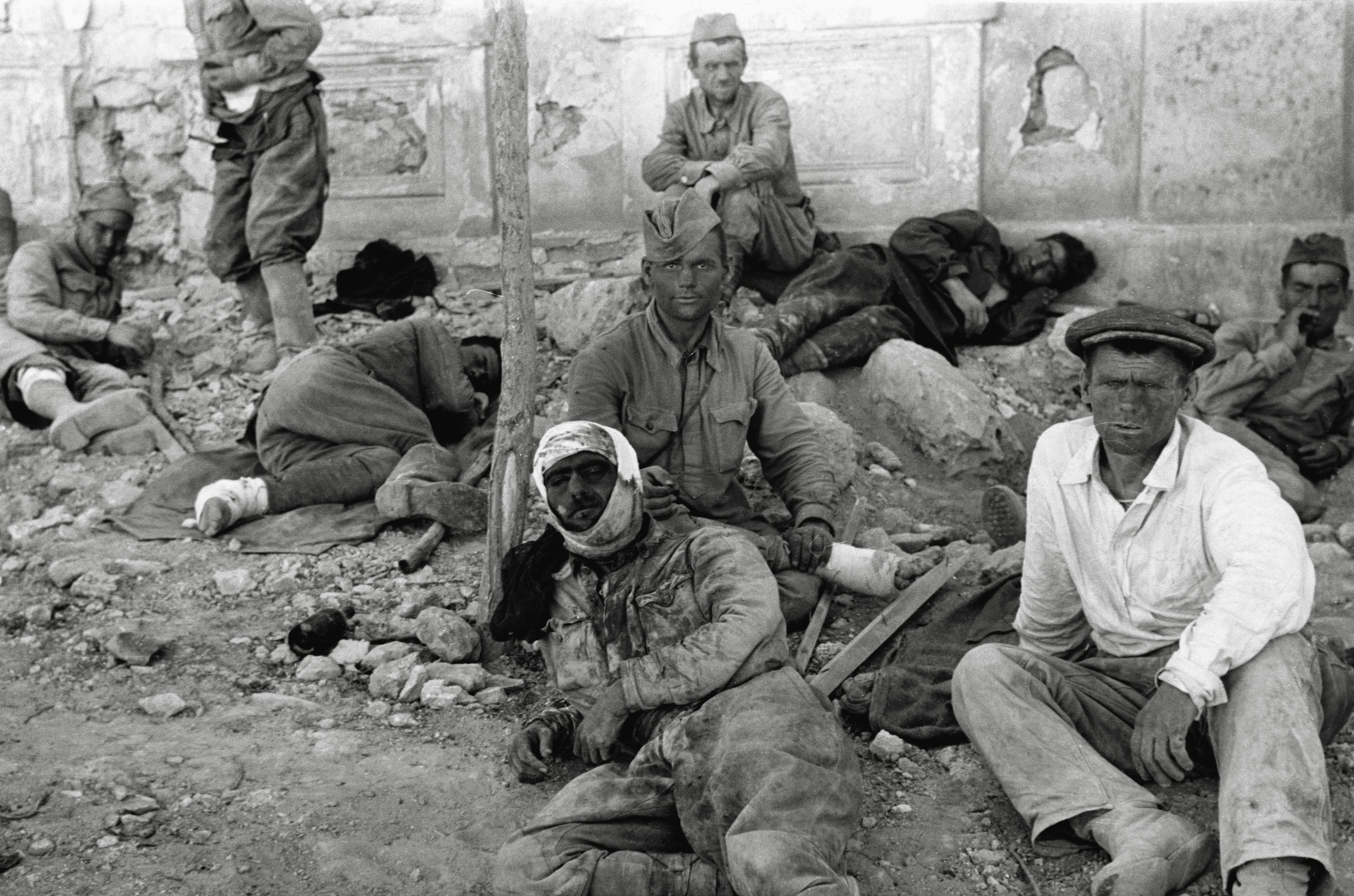
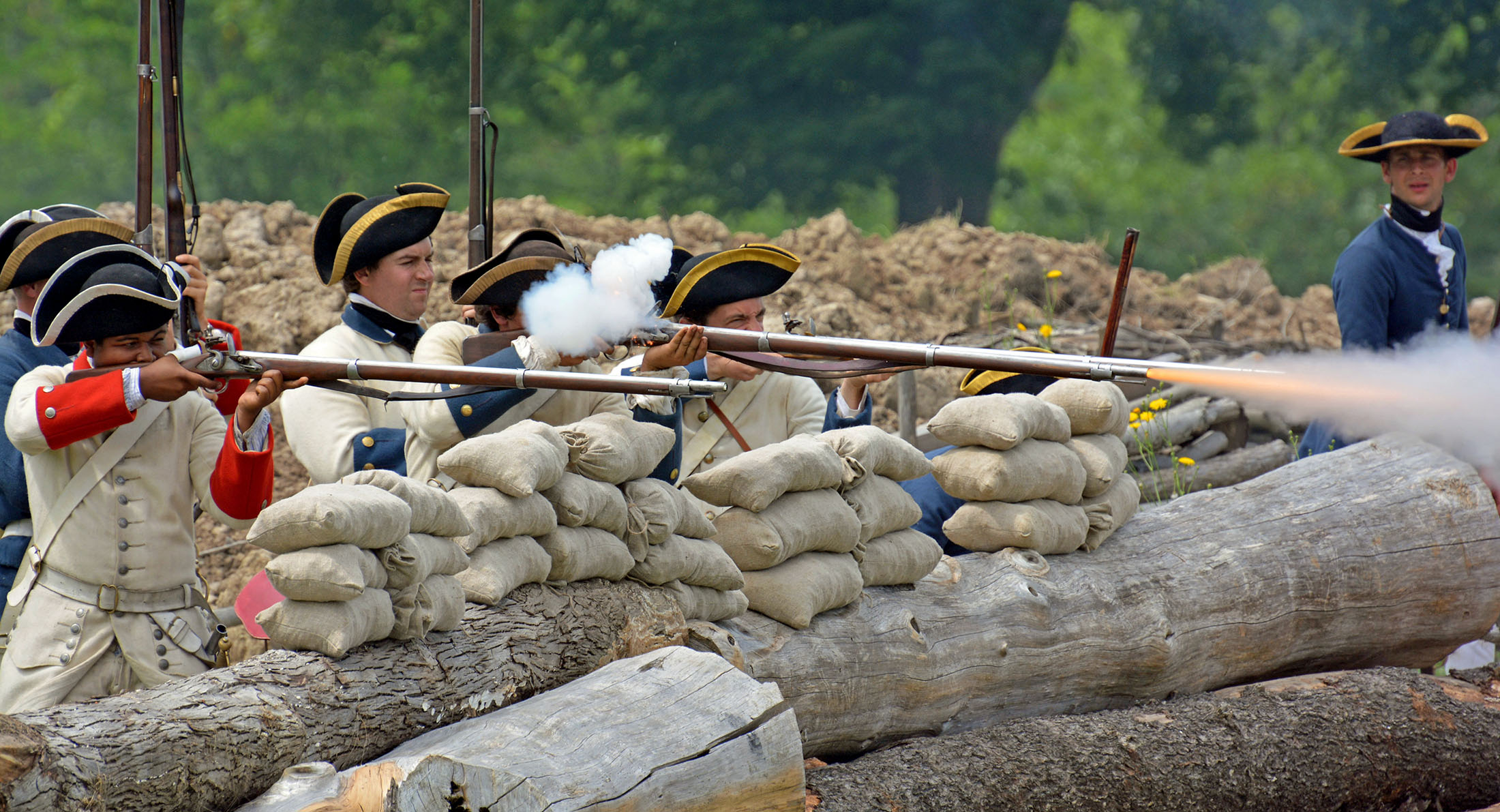
Join The Conversation
Comments
View All Comments